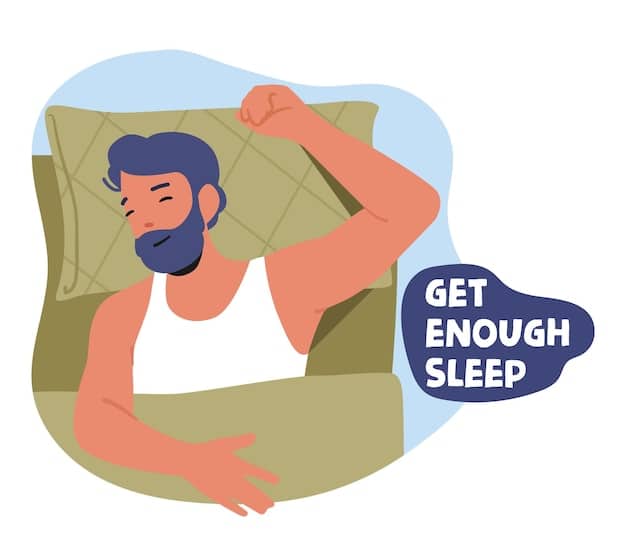Get Leaner Abs: Nutrition & Workout for Definition

Achieving definition in your core involves a synergistic approach, effectively combining targeted exercise with precise nutritional strategies to reduce body fat and enhance muscle visibility.
For many, the quest for a sculpted midsection goes beyond aesthetics, embodying dedication, discipline, and a holistic understanding of their body. Attaining Get Leaner Abs: The Nutrition-Paired Workout Routine for Definition requires more than just crunches; it demands a strategic fusion of precise exercise and meticulous dietary considerations to unveil the underlying musculature.
Understanding the Core: Beyond Just Abs
Many individuals primarily focus on the rectus abdominis, often overlooking the deeper and surrounding musculature that provides true core stability and contributes significantly to a defined look. A truly lean and defined core is a result of strengthening a complex network of muscles, each playing a crucial role in movement, posture, and protection of the spine. Starting with a comprehensive understanding of these muscle groups sets the foundation for effective training protocols.
The Anatomy of Definition
The core encompasses more than just the visible “six-pack” muscles. It includes the deep transverse abdominis, internal and external obliques, erector spinae, and even muscles of the hip flexors and glutes. Neglecting any of these can lead to imbalances and hinder your progress toward a truly defined midsection.
- Rectus Abdominis: The “six-pack” muscle, responsible for trunk flexion.
- Transverse Abdominis: The deepest abdominal muscle, acts like a natural corset, stabilizing the spine.
- Obliques (Internal & External): Located on the sides, responsible for trunk rotation and lateral flexion.
- Erector Spinae: Muscles running along the spine, crucial for back extension and posture.
Training this entire musculature system ensures not only aesthetic definition but also functional strength, reducing the risk of injury and improving overall athletic performance. It’s about building a robust internal framework, not just surface appeal. Developing a routine that incorporates exercises targeting all these areas is paramount for optimal results and a truly defined core.
The Foundational Pillars of Abdominal Definition: Nutrition
While targeted exercises are essential for building muscle, it is widely accepted that “abs are made in the kitchen.” Nutritional strategies play a paramount role in reducing body fat, which is necessary to reveal the abdominal muscles beneath. Without addressing dietary habits, even the most rigorous workout routine may not yield the desired visual results.
Optimal nutrition for fat loss typically involves creating a caloric deficit while ensuring adequate protein intake to preserve muscle mass. This balance is critical; extreme calorie restriction can lead to muscle loss, making it harder to achieve a toned look.
Macronutrients: What Your Body Needs
A balanced intake of macronutrients—proteins, carbohydrates, and fats—is crucial. Each plays a distinct role in energy, recovery, and body composition. Understanding their functions helps in structuring a diet that supports both fat loss and muscle retention.
- Protein: Essential for muscle repair and growth, and highly satiating. Aim for 0.7-1 gram per pound of body weight.
- Complex Carbohydrates: Provide sustained energy for workouts and recovery. Examples include whole grains, fruits, and vegetables.
- Healthy Fats: Crucial for hormone production and nutrient absorption. Sources include avocados, nuts, seeds, and olive oil.
Beyond macronutrients, micronutrients from a wide variety of whole foods support metabolism and overall health. Focus on nutrient-dense foods that provide essential vitamins and minerals without excessive calories. This approach helps maintain energy levels and supports physical performance, which is vital when pursuing a challenging fitness goal.
Strategic Calorie Management
To shed the layer of fat obscuring your abs, a slight caloric deficit is required. This means consuming fewer calories than your body expends. However, this deficit should be moderate to avoid metabolic slowdown and extreme hunger, which often lead to diet abandonment. Calculating your maintenance calories and then subtracting 300-500 calories is a common starting point.
Tracking your intake, at least initially, can be immensely helpful to understand your habits and ensure you’re consistently meeting your nutritional targets. Precision in diet is often the missing link for those struggling to achieve visible abdominal definition. Consistent monitoring allows for adjustments, ensuring progress is tracked efficiently and effectively.
Designing Your Abdominal Workout Routine
The most effective ab workouts move beyond endless crunches, incorporating a variety of exercises that challenge the core dynamically and from multiple angles. A comprehensive routine will target all core muscle groups, focusing on both strength and endurance. The goal is to stimulate muscle growth and improve functional strength, which translates to better definition and overall stability.
Progression is key; as your strength improves, you’ll need to increase the intensity or complexity of your exercises. This could mean adding resistance, increasing repetitions, or trying more challenging variations of movements. Sticking to the same routine without progression often leads to plateaus, where gains in strength and definition slow down.

Key Exercises for Upper Abs
While there isn’t a true “upper” or “lower” ab muscle (the rectus abdominis is one muscle), certain exercises tend to emphasize the upper fibers more effectively. These generally involve bringing your rib cage closer to your pelvis, creating a strong contraction.
- Crunches: A classic, but focus on quality over quantity. Keep your lower back pressed to the floor.
- Cable Crunches: Adds resistance, allowing for progressive overload.
- Ab Rollout: Uses an ab wheel or barbell to challenge the entire core dynamically.
These exercises help build the visible “blocks” of the rectus abdominis, contributing to overall definition. Proper form is more important than the number of repetitions, as engaging the correct muscles prevents injury and maximizes effectiveness.
Targeting Lower Abs & Obliques
Lower abdominal exercises typically involve lifting the legs or hips towards the chest, while oblique exercises focus on twisting and side-bending movements. These areas are crucial for a well-rounded and defined core, providing both strength and the desired aesthetic shape.
- Hanging Leg Raises: Advanced exercise that intensely targets the lower abs.
- Reverse Crunches: Lifts the hips off the floor, engaging the lower rectus abdominis.
- Russian Twists: Engages the obliques; can be done with or without weight.
- Side Planks: Excellent for isometric strength in the obliques and transverse abdominis.
Incorporating a mix of these exercises ensures that all parts of your core are adequately challenged, leading to balanced development and a more defined appearance. Consistent application of these exercises will lead to significant improvements over time.
Integrating Cardio for Enhanced Fat Loss
While resistance training builds muscle, cardiovascular exercise plays a critical role in burning calories and reducing overall body fat. Strategic inclusion of cardio can accelerate your journey to leaner abs without compromising muscle mass. The type and intensity of cardio can vary based on individual preferences and fitness levels, but consistency is key.
High-Intensity Interval Training (HIIT)
HIIT involves short bursts of intense exercise followed by brief recovery periods. This method is highly effective for burning calories and increasing your metabolic rate, even after the workout is complete. Its time-efficiency makes it a popular choice for those with busy schedules.
- Sprint Intervals: Running, cycling, or rowing at maximum effort for 30-60 seconds, followed by 1-2 minutes of active recovery.
- Bodyweight HIIT: Incorporating burpees, jump squats, and mountain climbers for short, intense rounds.
The metabolic impact of HIIT can be significant, contributing to a greater overall caloric expenditure throughout the day. It’s a powerful tool for shedding stubborn body fat, making your abdominal muscles more visible. However, care must be taken not to overtrain, as HIIT can be demanding on the body.
Low-Intensity Steady-State (LISS) Cardio
LISS cardio involves maintaining a moderate intensity for a longer duration, such as a brisk walk or light jog. While it burns fewer calories per minute than HIIT, it is less taxing on the body, making it ideal for recovery days or as an addition to your routine without risking overtraining.
LISS can be particularly beneficial for managing overall energy balance without inducing excessive fatigue. It helps to create a caloric deficit in a sustainable manner, complementing your high-intensity workouts and ensuring adequate recovery. These sessions are also great for stress reduction, which can indirectly aid in fitness goals.
The Critical Role of Recovery and Lifestyle
Often overlooked, recovery is as important as the training itself when it comes to muscle development and fat loss. Muscle growth occurs during rest, not during the workout. Adequate sleep, stress management, and proper hydration are fundamental pillars supporting your fitness journey toward defined abs. Neglecting these aspects can severely impede progress, regardless of how perfect your diet and exercise routines may be.
Furthermore, lifestyle factors extend beyond just physical rest. Emotional well-being, consistency in routine, and adherence to habits contribute significantly to sustained success. Understanding that the body adapts and recovers differently based on external stressors and internal balance is crucial for long-term definition.

The Power of Sleep
Sleep is when your body repairs muscle tissue, regulates hormones (including those related to appetite and fat storage), and consolidates memories. Chronic sleep deprivation can lead to increased cortisol levels, which promotes fat storage, particularly in the abdominal area. Aim for 7-9 hours of quality sleep per night to optimize recovery and hormone balance.
- Hormonal Regulation: Good sleep supports optimal levels of growth hormone (for muscle repair) and leptin (satiety hormone).
- Cortisol Control: Sufficient sleep helps keep cortisol, a stress hormone linked to belly fat, in check.
- Energy Restoration: Waking up refreshed provides the energy needed for effective workouts and adherence to dietary plans.
Establishing a consistent sleep schedule, creating a relaxing bedtime routine, and optimizing your sleep environment are practical steps to improve sleep quality. These actions directly contribute to your ability to recover and perform at your best, enhancing your visible results.
Stress Management and Hydration
Chronic stress can also elevate cortisol, making it harder to lose abdominal fat. Incorporating stress-reducing activities like meditation, yoga, or spending time in nature can significantly impact your progress. Managing stress is not just about mental well-being; it’s a physiological factor in body composition.
Hydration is another simple yet critical factor. Water plays a role in nearly every bodily function, including metabolism, nutrient transport, and detoxification. Staying well-hydrated supports energy levels, reduces hunger cues, and optimizes physical performance. Aim for at least 8 glasses of water daily, increasing intake during and after workouts. These lifestyle choices, when consistently applied, reinforce the benefits of your nutrition and workout efforts, ensuring a holistic approach to core definition.
Common Pitfalls and How to Avoid Them
The journey to leaner abs is often fraught with common misconceptions and mistakes that can derail progress. Understanding these pitfalls and proactive strategies to avoid them is crucial for sustained success. Many individuals fall into traps that lead to frustration rather than definition, making awareness key.
From overtraining to obsessing over specific “ab exercises” while neglecting diet, these errors prevent true progress. Addressing these issues with informed strategies can significantly accelerate your results and maintain motivation over time.
Mistake 1: Neglecting Nutrition
As repeatedly emphasized, abs are revealed through fat loss, which is predominantly driven by diet. Focusing solely on ab exercises without addressing caloric intake and macronutrient balance is a common and futile endeavor. You can build strong abdominal muscles, but they will remain hidden beneath a layer of fat.
- Solution: Prioritize a sustainable caloric deficit and adequate protein intake. Track your food for a few weeks to gain awareness.
- Avoid: Relying on endless crunches without dietary changes.
A consistent and disciplined approach to nutrition will yield far greater results than any amount of targeted abdominal work alone. It’s about optimizing your body composition universally.
Mistake 2: Overtraining and Lack of Recovery
The core muscles, like any other muscle group, need time to recover and grow. Training abs every single day can lead to overtraining, which impedes progress and increases the risk of injury. More is not always better. Sufficient rest is paramount for muscle repair and optimal functionality.
- Solution: Train abs 2-3 times per week, allowing at least 48 hours of rest between sessions.
- Avoid: Daily ab workouts, which can lead to fatigue and plateaus.
Give your core muscles the recovery they need to adapt and strengthen. This structured rest period is crucial for muscle hypertrophy and overall training effectiveness, preventing burnout and ensuring consistency.
Maintaining Your Hard-Earned Definition
Achieving lean and defined abs is a significant accomplishment, but maintaining that definition requires ongoing commitment to the same principles that got you there. It’s not a temporary fix but a sustained lifestyle. Consistency is paramount, ensuring that dietary discipline and regular exercise remain integral parts of your routine, even after reaching your initial goals.
The strategies used for cutting fat and building muscle mass should evolve into a maintenance phase. This involves subtle adjustments to caloric intake and exercise intensity to sustain your desired body composition without continuously pushing for extreme results. Finding a sustainable balance is critical for long-term success and enjoyment of your progress.
Sustainable Nutrition Habits
Once you’ve achieved your desired body fat percentage, you can gradually increase your caloric intake to a maintenance level. This does not mean reverting to old eating habits; rather, it involves a balanced approach to ensure you consume enough to fuel your body and maintain muscle, without accumulating excess fat. Adopting flexible dieting principles can be highly effective.
Focus on whole, unprocessed foods and allow for occasional treats in moderation. The key is to manage your energy balance sustainably, avoiding drastic fluctuations that could lead to fat regain. This consistent awareness over food choices helps embed a habit of conscious eating, becoming second nature.
Consistent Training Adaptation
Regular exercise, including both strength training and cardiovascular activity, should remain a cornerstone of your routine. You might shift your focus from aggressive fat loss to maintaining muscle mass and strength, but consistent engagement with physical activity is essential. Varying your workouts can also keep things interesting and continue to challenge your muscles in new ways.
This includes maintaining core-specific exercises to preserve definition and strength. Adapting your routine to fit different life stages or changing fitness goals ensures that you continue to challenge your body effectively. Continued progression, even subtle, reinforces muscle mass and prevents regression, preserving the visible results of your efforts.
| Key Point | Brief Description |
|---|---|
| 🍎 Nutrition is Key | Reduce body fat through a consistent caloric deficit and high protein intake. |
| 💪 Comprehensive Core Work | Target all core muscles (rectus, obliques, transverse) with varied exercises. |
| 🏃♂️ Strategic Cardio | Incorporate both HIIT and LISS to enhance fat burning and metabolic rate. |
| 😴 Rest & Recovery | Adequate sleep, stress management, and hydration are crucial for muscle growth and fat loss. |
Frequently Asked Questions
▼
For optimal definition, training your abs 2-3 times per week is generally recommended. This frequency allows for sufficient recovery and growth, which is crucial for muscle development. Remember, overtraining can be counterproductive, so prioritize quality over quantity and ensure adequate rest between sessions. Consistency matters more than daily heavy workouts.
▼
Unfortunately, spot reduction is a myth. You cannot specifically target fat loss from one area of your body, like your belly. Fat loss is a systemic process, meaning your body loses fat from all over. Achieving leaner abs primarily relies on overall fat reduction through a caloric deficit combined with comprehensive core training to build muscle underneath.
▼
The most crucial dietary change for ab definition is to create and maintain a consistent caloric deficit while ensuring high protein intake. This deficit forces your body to use stored fat for energy, revealing the abdominal muscles. Increased protein helps preserve muscle mass during fat loss, which is essential for a toned appearance. Focus on whole, unprocessed foods.
▼
The timeframe to see defined abs varies widely depending on your current body fat percentage, consistency with diet and exercise, genetics, and overall lifestyle. For someone with higher body fat, it may take several months to a year or more of consistent effort. For those already lean, visible abs might appear within weeks with a focused approach.
▼
For ab definition, a balanced approach combining both cardio and strength training is most effective. Strength training builds muscle, making the abs more prominent, while cardio helps reduce the layer of fat covering them. Neither is singularly sufficient; both contribute significantly to the overall goal. Prioritize consistency in both aspects for best results.
Conclusion
Achieving truly lean and defined abs is a nuanced journey, demanding more than isolated exercise. It necessitates a harmonious blend of meticulous nutrition, strategic full-body training, and diligent lifestyle management. By prioritizing a sustainable caloric deficit, emphasizing adequate protein, engaging the entire core musculature, and ensuring sufficient recovery, individuals can unveil the definition they seek. This holistic approach ensures not only aesthetic enhancement but also functional strength and long-term well-being. Consistency, patience, and adaptability are the true catalysts for sculpting and maintaining a strong, visible core.





